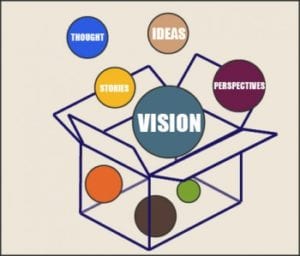 Board member engagement is a perennial challenge for board leaders and CEOs alike. In the most recent edition of its biennial Governance Index entitled Leading with Intent, BoardSource found that fewer than 1 in 5 CEOs strongly agree that board members are engaged.
Board member engagement is a perennial challenge for board leaders and CEOs alike. In the most recent edition of its biennial Governance Index entitled Leading with Intent, BoardSource found that fewer than 1 in 5 CEOs strongly agree that board members are engaged.
Often, the problem is the lack of meaning and creativity in so much of the work boards do. Take a look at your board’s last minutes — how much of the agenda was spent on routine informational reports, backward-looking reports on last month’s financials and the latest fundraising event, and of course, exhortations to do more fundraising?
What would your board meetings be like if members were called upon to engage creatively in complex questions of real significance to the future of your organization and the people it serves? More importantly, what could these sorts of conversations do to unleash your board’s unrealized potential for leadership that charts the organization’s future rather than overseeing its past?
This is the “generative mode” of governance that the authors Richard Chait, Bill Ryan, and Barbara Taylor describe in their influential book Governance as Leadership. This is the thought space in which boards and executives frame problems and make sense of ambiguous situations, fundamentally shaping the organization’s definition of its own mission, identity, culture, strategies, plans, and results.
How can we break out of old habits and get the board thinking generatively? As one of my favorite governance bloggers, Debra Beck, reminds us in a recent post, the great majority of adult learning happens “on the job” through role modeling and active practice. In other words, the only way we can get better at generative thinking is by doing it.
In the first part of a three-part series, here are some tips for board chairs, CEOs, and committee leaders (and even leaders of other teams) to spur more generative and reflective thinking. I encourage you to apply these in your next board meeting. Over the next few weeks I will be posting more ideas for making board meetings more productive and focused, and for creating learning loops for continuous improvement.
Break out of the Box
- Role plays & perspective-taking. Ask subsets of the board to assume the perspective of different constituent groups likely to be affected by the issue at hand. How would they frame the issue and define a successful outcome? What would each group regard as a worst-case scenario? A best-case scenario?
- Future-Perfect History. In breakout groups, develop a future-perfect narrative of how the organization can move from its present state to its envisioned state. Compare story lines, pathways, and detours.
- Flag generative landmarks. During discussions about even seemingly routine or fiduciary matters, look for “generative landmarks.” These include multiple interpretations by board members about what a situation is or what requires attention, or indications that an issue means a great deal to many of the board members and touches on their perception of the organization’s core values. Take advantage of these “landmarks” to surface differing assumptions about the organization’s mission, understanding of past experience, or relationships with core stakeholders.
Build in Reflection
- Silent starts. When there is an important matter for the board to consider, give everyone a minute to think about it and write something down on the topic under discussion. This helps people become more thoughtful and engaged in the topic.
- One-minute essays. At the end of the discussion, ask people to write down what they would like to say about the issue if there were more time. After the board meeting, read what they have written. These often tend to be “Type III concerns” — comments that reflect generative thinking — which can be used to help set the agenda for the following board meeting.
Catalyze thought
- Pose catalytic Questions. Generative thinking can be spurred by posing catalytic questions that invite creativity, exploration, and do not depend largely on data and logic to answer. Some examples:
- What three adjectives or short phrases best characterize this organization?
- What will be most strikingly different about this organization in five years?
- What do you hope will be most strikingly different about this organization in five years?
- On what list would you like this organization to rank at the top?
- Five years from today, what will this organization’s key constituents consider the most important legacy ?of the current board?
- What will be most different about the board or how we govern in five years?
- How would we respond if a donor offered a $50 million endowment to the one organization in our ?field that had the best idea for becoming a more valuable public asset?
- How would we look as a take-over target by a potential or actual competitor?
- If we could successfully take over another organization, which one would we choose and why?
- What has a competitor done successfully that we would not choose to do as a matter of principle?
- What have we done that a competitor might not do as a matter of principle?
- What headline would we most/least like to see about this organization?
- What is the biggest gap between what the organization claims it is and what it actually is?
For more information on becoming a more productive and creative leader, contact our office at (909) 632-1624.